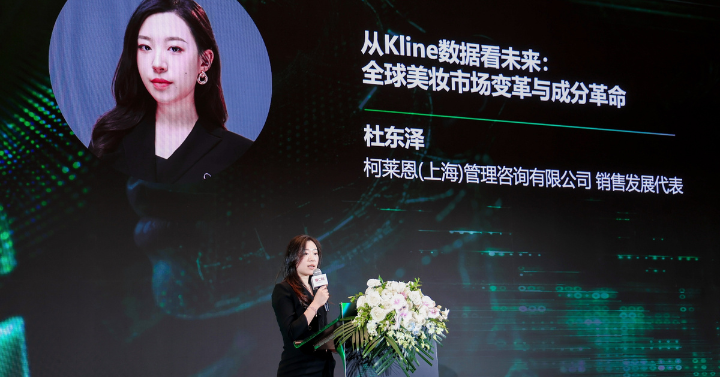Our local team in China has recently attended the China Beauty Expo (CBE) 2025, Asia’s leading trade fair for the beauty industry, bringing together global and local brands to showcase the latest in cosmetics, skin care, hair care, and personal care. Among the attendees were Chinese giants such as Proya, Jala Group (owners of Chando and Maysu), and Giant Biogene, (owner of Comfy and Collgene), alongside international brands looking to expand their presence in the China beauty market.
This year’s event placed a strong spotlight on sustainability, technology, and shifting consumer expectations. Innovations in green formulations, bio-based ingredients, and disruptive technologies such as AI and synthetic biology showcased the pace at which the China beauty market is evolving.
“AI is already reshaping China’s beauty landscape, enabling smarter product development, more targeted marketing, and leaner operations,” said Dongze (Carol) Du, Consultant in Kline + Company’s Beauty and Wellbeing vertical, who attended the event.“We expect continued investment in AI from local brands that want to stay ahead in both innovation and consumer engagement.”
In the lead-up to the event, Du also presented at the CBE meeting on “The Future Through Kline + Company’s Data: Global Beauty Market Transformation and the Ingredient Revolution.” Her presentation highlighted some of the key trends shaping the beauty market in China:
- Sensitive Skin Solutions Are on the Rise
With the growing popularity of medical aesthetics, demand for gentle, post-procedure skin care is surging. Brands such as Winona and Comfy are leading the charge, with product lines tailored to sensitive skin and barrier repair. - Ingredient-Led Branding Takes Center Stage
Chinese beauty consumers are deeply informed about ingredients. As a result, leading brands have differentiated themselves through science-backed product stories and technical superiority. Comfy and Collgene, for example, continue to lead in the collagen space, recently launching products featuring type IV collagen. Biohyalux, a standout in professional skin care, is recognized for its innovations with hyaluronic acid. Many of these brands benefit from vertical integration, being part of larger ingredient companies, which gives them an edge in both innovation and cost-efficiency. - Localization Becomes a Competitive Advantage
China’s beauty market is becoming increasingly self-reliant. Regulatory changes from the National Medical Products Administration (NMPA) have made it harder for foreign brands to operate without local adaptation, particularly in the case of Type III medical device certification, which now requires local safety and efficacy data. This has driven growth in domestic brand development and increased collaboration between Chinese companies and global beauty players aiming to gain local traction.
China remains a driving force in shaping global beauty trends. For international beauty brands, winning in this market takes more than product adaptation; it demands a deep understanding of consumer behavior, regulatory nuances, and a strong grasp of local competition.
From go-to-market strategies to competitive benchmarking and innovation roadmaps, Kline + Company supports beauty brands at every step of their journey. Explore our Beauty Business Strategy services or speak with an industry expert to learn how we can support your growth in China.


